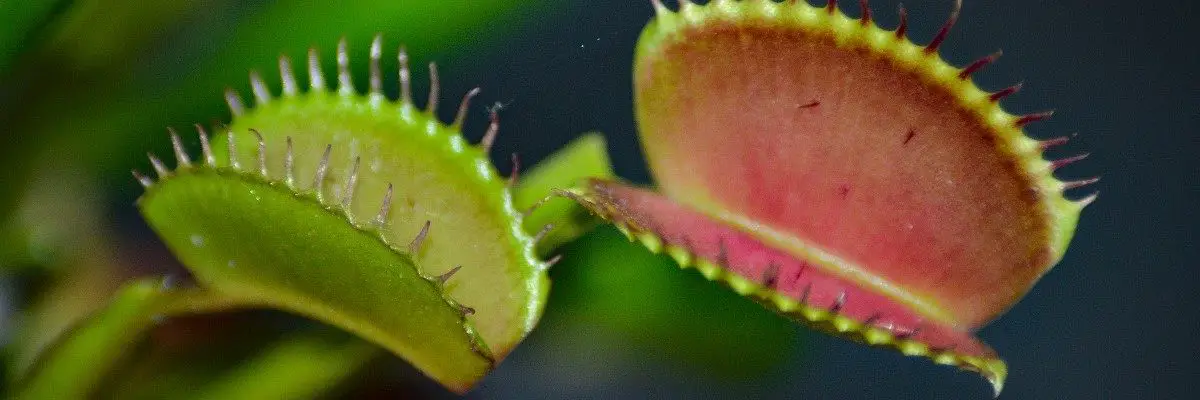Welcome, fellow plant enthusiasts, to the fascinating world of Venus Fly Traps! These carnivorous plants, known scientifically as Dionaea muscipula, are the botanical equivalent of a sci-fi movie. With their jaw-like leaves and insectivorous diet, they’re a far cry from your average houseplant. But don’t let their alien-like appearance fool you. These green wonders are not only intriguing but also surprisingly easy to propagate. So, buckle up as we embark on a journey of division, leaf cuttings, and seeds. It’s going to be a wild ride!
The Basics of Venus Fly Trap Propagation
Before we dive into the nitty-gritty of propagation, let’s take a moment to understand what it really means. In the simplest terms, propagation is the process of creating new plants from a variety of sources: seeds, cuttings, bulbs, and other plant parts. It’s like making a photocopy of your favorite plant. In the case of Venus Fly Traps, there are three main methods of propagation: division, leaf cuttings, and seeds. Each method has its own set of steps, requirements, and success rates. But don’t worry, we’ll guide you through each one, step by step.
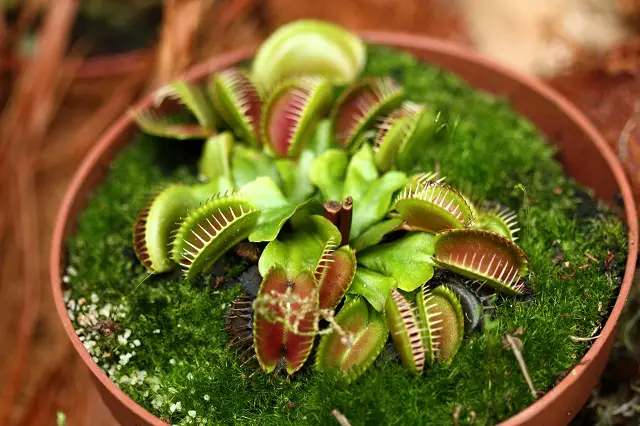
Propagation Method #1: Division
Division is the easiest and most straightforward method of Venus Fly Trap propagation. It’s like splitting a pie, but instead of a delicious dessert, you end up with two (or more) separate plants.
The best time for division is during the plant’s dormancy period, which usually falls between late winter and early spring. This is when the plant’s growth slows down, making it the perfect time to divide without causing too much stress to the plant.
To start, you’ll need to gently remove the plant from its pot and carefully separate the root ball into two or more sections. Each section should have at least one growth point (the area where the leaves and traps grow from). Once you’ve divided the plant, repot each section in a suitable carnivorous plant soil mix, water well, and place in a location with bright, indirect light.
Remember, patience is key here. It may take a few weeks for the new plants to establish and start showing signs of growth. But trust us, the wait will be worth it!
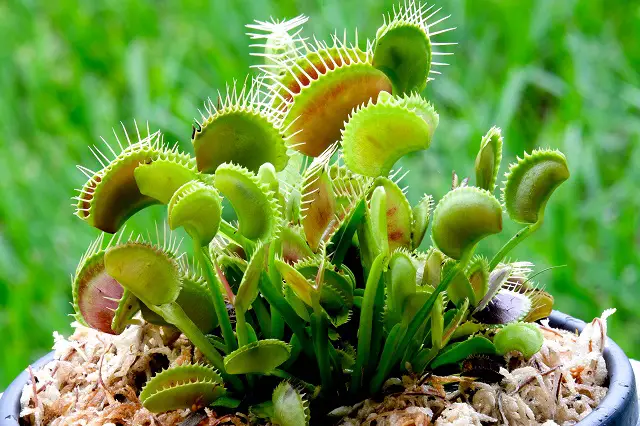
Propagation Method #2: Leaf Cuttings
If you’re feeling a bit more adventurous, why not try propagating your Venus Fly Trap through leaf cuttings? This method requires a bit more work than division, but it’s a fascinating process that’s sure to impress your plant-loving friends.
In the early summer, select a healthy, mature leaf from your Venus Fly Trap. Cut the leaf off as close to the base using a clean, sharp knife. Then, place the leaf-cutting on a mix of sand and peat moss, ensuring the cut end is in contact with the soil. Cover the pot with a clear plastic bag or place it in a mini greenhouse to create a humid environment.
Just like with division, patience is crucial. The leaf-cutting may take several weeks to develop roots and start growing a new plant. But once it does, you’ll have the satisfaction of knowing you propagated a Venus Fly Trap from just a single leaf!
Propagation Method #3: Seed
The third and final method of Venus Fly Trap propagation is through seeds. This method is a bit more challenging and time-consuming than division or leaf cuttings, but it’s a fantastic way to experience the full life cycle of a Venus Fly Trap.
To propagate Venus Fly Traps from seeds, you’ll first needto obtain seeds, which can be harvested from the flowers of mature plants or purchased from a reputable supplier. Once you have your seeds, spread them on a mix of sand and peat moss, lightly pressing them into the surface but not covering them, as they need light to germinate.
Place the pot in a location with bright, indirect light and high humidity. A plastic bag or mini greenhouse can be used to maintain humidity. Keep the soil constantly moist but not waterlogged. With the right conditions, the seeds should start to germinate in a few weeks.
However, growing Venus Fly Traps from seeds requires a lot of patience. It can take several years for seedlings to grow into mature, trap-bearing plants. But if you’re up for the challenge, it can be a rewarding and educational experience.
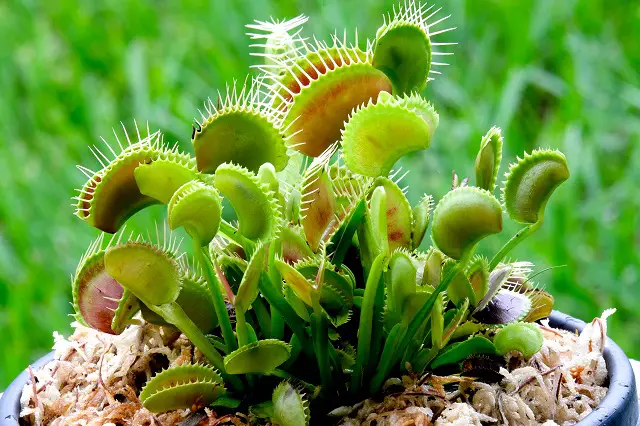
Caring for Your Newly Propagated Venus Fly Traps
Congratulations! You’ve successfully propagated your Venus Fly Traps. But the journey doesn’t end here. Now comes the crucial phase of caring for your young plants and helping them grow into strong, healthy adults.
Regardless of the propagation method used, all young Venus Fly Traps need a few key conditions to thrive:
- Light: Venus Fly Traps need plenty of bright, indirect light. A south-facing windowsill is a great location. If natural light is insufficient, fluorescent or LED grow lights can be used.
- Water: These plants like to stay constantly moist. Use rainwater, distilled water, or reverse osmosis water, as tap water often contains minerals that can harm the plants.
- Soil: Venus Fly Traps prefer poor, acidic soil. A mix of sphagnum peat moss and perlite or sand works well.
- Feeding: Contrary to popular belief, Venus Fly Traps don’t need to eat bugs very often. In fact, overfeeding can harm the plant. Once a month is more than enough. Remember, they get most of their nutrients from sunlight, just like other plants.
- Temperature: Venus Fly Traps prefer warm days and cooler nights. They can tolerate a range of temperatures, from 32°F (0°C) in winter dormancy to 95°F (35°C) in summer.
- Humidity: As native to boggy areas, Venus Fly Traps appreciate high humidity. However, they can adapt to lower humidity levels if gradually acclimated.
Conclusion
And there you have it, the A to Z of Venus Fly Trap propagation! Whether you’re a seasoned plant parent or a green-thumbed newbie, propagating Venus Fly Traps is a rewarding and engaging experience. It’s not just about creating new plants; it’s about participating in the miracle of life, understanding the wonders of nature, and cultivating a deeper appreciation for our green friends. So, why wait? Roll up your sleeves, get your hands dirty, and start propagating! Remember, in the world of Venus Fly Traps, every day is a fly day!
Frequently Asked Questions
| Question | Answer |
|---|---|
| What kind of fertilizer should I use for my Venus Fly Trap? | Venus Fly Traps perform best in soil that is low in nutrients, so fertilizing is not recommended. |
| How big will my Venus Fly Trap grow? | The size of a Venus Fly Trap can vary, but typically, they grow to about 6-12 inches tall. |
| How often should I feed my Venus Fly Trap? | Venus Fly Traps don’t need to eat bugs very often. In fact, overfeeding can harm the plant. Once a month is more than enough. |
| How long can Venus Fly Traps live? | With proper care, Venus Fly Traps can live for 20 to 30 years. |
| What is the active growing season for Venus Fly Traps? | The active growing season for Venus Fly Traps is from mid-spring to early fall. |
| When should my Venus Fly Trap be repotted into a bigger container? | Venus Fly Traps should be repotted every one to two years, usually during their dormancy period in the late winter or early spring. |
| Can the Venus Fly Trap eat meat other than insects? | Venus Fly Traps are adapted to catch and digest insects and spiders. Feeding them other types of meat can harm the plant. |
| Can a Venus Fly Trap survive on water alone or do I need to constantly feed it bugs? | Venus Fly Traps can survive on water and sunlight alone, but feeding them insects can help them grow more robustly. |
| Is it normal for Venus Fly Trap to produce small or deformed traps right after dormancy? | Yes, it’s normal for Venus Fly Traps to produce smaller traps right after dormancy. The traps should become larger and more robust as the growing season progresses. |
| I fed my Venus Fly Trap something and now the leaf is dying. Why is this happening? | Overfeeding or feeding inappropriate food (like human food or large bugs) can harm the traps and cause them to blacken and die. |
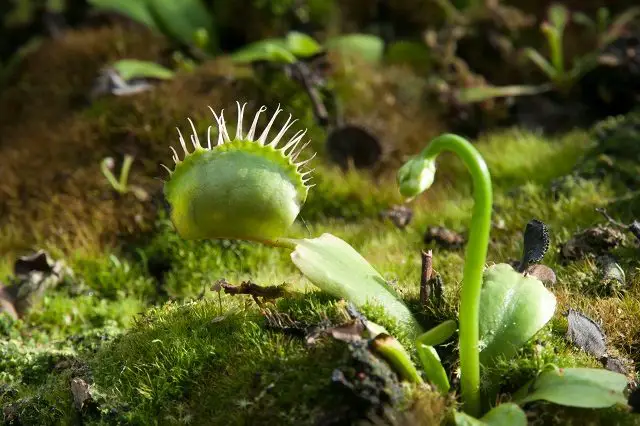
Remember, these are general answers, and each individual plant may have different needs or react differently to care methods. Always observe your plant’s health and adjust care as needed.

